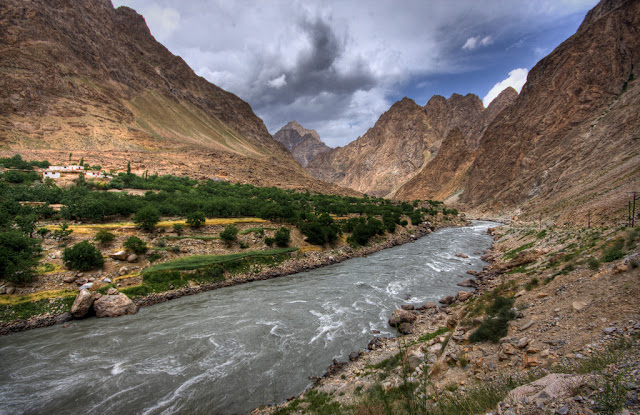Badakhshan Province (Pashto: بدخشان ولایت / Dari: استان بدخشان) is one of the thirty-four provinces of Afghanistan, located in the northeastern part of the country between the Hindu Kush mountains and the Amu Darya River. It is part of a broader historical Badakhshan region. The province contains 22 to 28 districts, over 1,200 villages, and approximately 904,700 people. Feyzabad serves as the provincial capital.
The northeastern province of Badakhshan has always sat slightly apart from the rest of Afghanistan. As the plains become scrunched up into a knot of mountains, and the Hindu Kush collides with the Pamir range, the distance from Kabul seems to be measured in centuries as much as miles.Badakhshan’s history as well as its geography reveals this independent streak. A far outpost of the Achaemenid empire, by the medieval period it was recognised as a sovereign state, its wealth deriving from the trade routes through the mountains between China, Kashmir and Bukhara. Timur tried and failed to subdue it, while his successors sent embassies instead. In the 19th century Badakhshan was finally subsumed into the Afghan state but even Abdur Rahman Khan baulked at having to rule it properly. The Wakhan Corridor, that panhandle of land sticking into China, was only forced on him when the British and Russians decided they needed a buffer between their empires. A century later, Badakhshan was the only part of Afghanistan to resist capture by the Taliban.
It is the scenery that attracts visitors today. The provincial capital of Faizabad provides a gateway to some of the country’s most sublime landscapes, from the Kuchi pastures of Lake Shewa to the Pamirs themselves, home of the last nomadic Kyrgyz on earth, in mountains so high that Marco Polo claimed that even birds couldn’t fly there. Of equal inspiration to the truly intrepid are the mines of Sar-e Sang, source of most of the world’s lapis lazuli. Badakhshan also serves as an entry point into Tajikistan and, potentially, northern Pakistan.
Visitors should be aware that Badakhshan is second only to Helmand for opium production. Controlled by Northern Alliance, opium is the backbone of the local economy. Ironically, security is generally fairly good in the province, but you should be extremely circumspect with cameras and questions if travelling in an area with poppy cultivation. When there have been security problems in Badakhshan, these have tended to coincide with eradication programmes, when being a foreigner in certain areas isn’t necessarily a popular thing to be.
Read more: http://www.lonelyplanet.com/afghanistan/mazar-e-sharif-and-northeastern-afghanistan/badakhshan?destination_tag_id=355758#ixzz2ZoD7D56E
Shot on the road between Khorog and Kalaikhum along the pamir highway in Tajikistan. The river makes the border between Tajikistan and Afghanistan, so on the left it's an Afghan village Photo by M.Bob
 Mountains in Badakhshan Province, Afghanistan, February of 2009.Photo by John Scott Rafoss of the United States of America.
Mountains in Badakhshan Province, Afghanistan, February of 2009.Photo by John Scott Rafoss of the United States of America.Ghool pala vilage in Raghistan - Badakhshan- Northern Afghanistan
A view of Kokcha river. Faizabad, the capital city of Badakhshan province- Afghanistan
Somewhere in Badakhshan
Natural beauty of Badakhshan
Afghanistan, with Hindu Kush peeping out behind
For more Photos visit-> Badakhshan
















0 comments:
Post a Comment